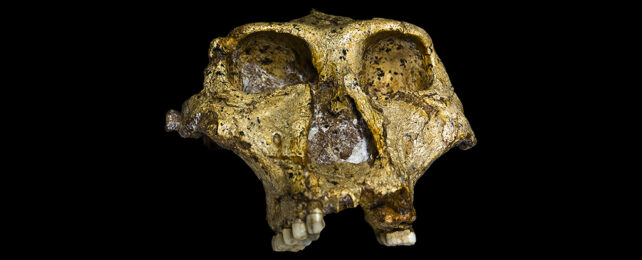Researchers have managed the incredible feat of predicting genetic relationships between some of the earliest hominins to live on planet Earth, using little more than some proteins scraped from 2 million year old fossilized teeth.
The team behind the new study, mostly from the University of Copenhagen in Denmark and the University of Cape Town in South Africa, says the analysis will be vitally useful in tracing the distant family tree of human beings.
"The evolutionary relationships among extinct African hominin taxa are highly debated and largely unresolved, due in part to a lack of molecular data," write the researchers.
"Even within taxa, it is not always clear, based on morphology alone, whether ranges of variation are due to sexual dimorphism versus potentially undescribed taxonomic diversity."
The research will help paleoanthropologists chart out which differences in the fossil record are down to natural variations between men and women (sexual dimorphism), and which signify separate species of hominids altogether.
When it comes to timescales of thousands and millions of years, answering those questions isn't at all straightforward. The DNA molecule is fragile, prone to disintegrating quickly. Nuclear DNA from 430,000 year old hominin remains of has been deciphered, yet the process itself was far from productive.
Proteins can be a little more robust, and their amino acide sequences can be translated back into a possible genetic code that produced them. Although far from precise, it could serve as a reasonable proxy for estimating a genetic relationship where the genes themselves can't be read.
In this case the data was interpreted enamel on teeth recovered from Swartkrans cave, an important site for archaeological material that's about 40 kilometers (25 miles) to the northwest of Johannesburg. They were thought to belong to an ancient relative of ours, Paranthropus robustus.
By cross-checking their results against DNA information from other fossils and today's hominids – from orangutans to humans – the researchers were able to tentatively show that P. robustus represented an "outgroup" (like distant cousins, in a way) to the evolutionary line that includes Homo sapiens, Neanderthals, and Denisovans.
Flash floods in an otherwise arid area were responsible for these teeth being so well buried and preserved, the team reports. That may limit how many other fossils we can find like this, but the techniques used here should be able to be applied elsewhere too.
"This study demonstrates the feasibility of recovering informative Early Pleistocene hominin enamel proteins from Africa," write the researchers.
"We anticipate that this approach can be widely applied to geologically-comparable sites within South Africa, and possibly more broadly across the continent."
The study has yet to be peer reviewed, but is available to view on the preprint server bioRxiv.
